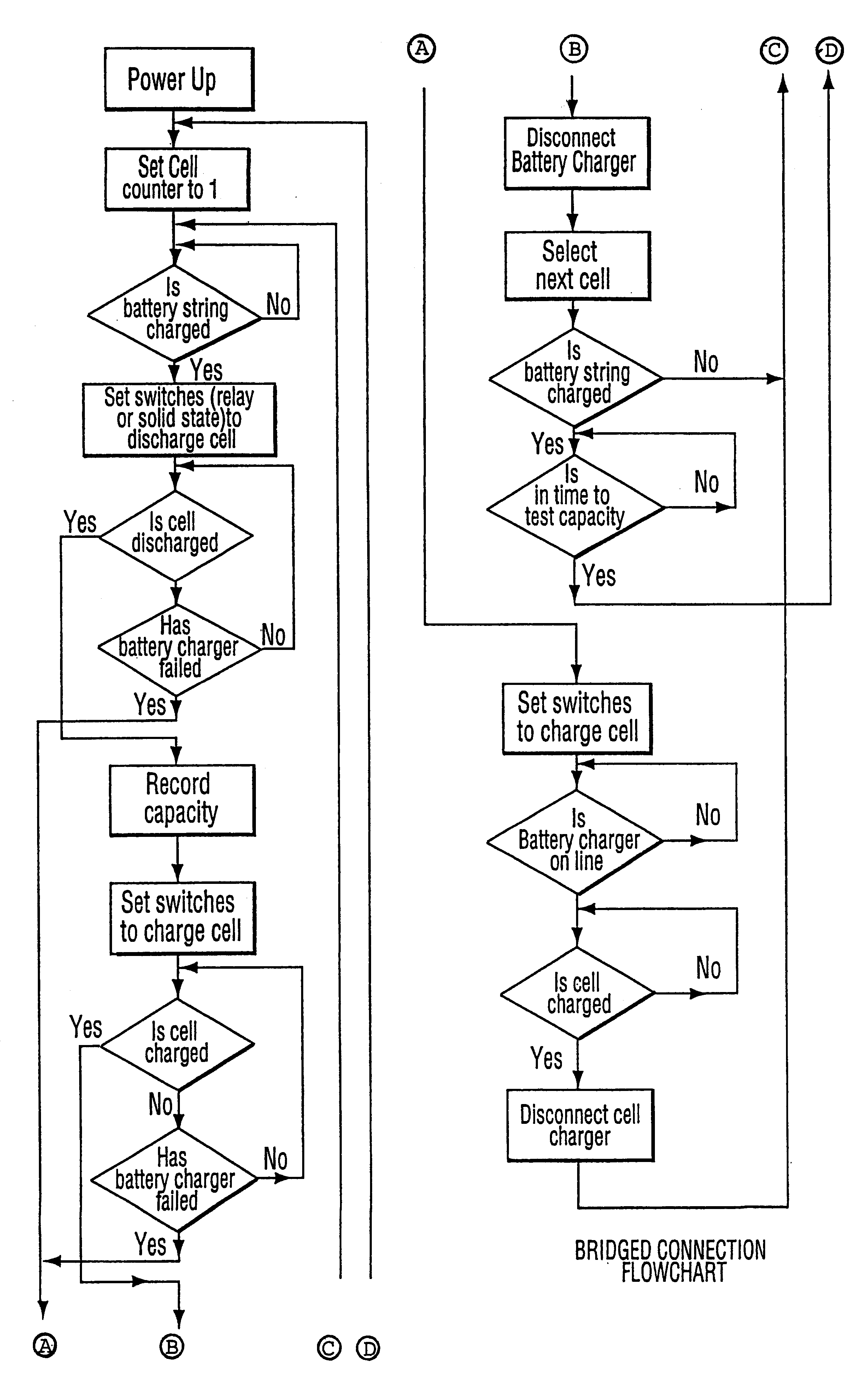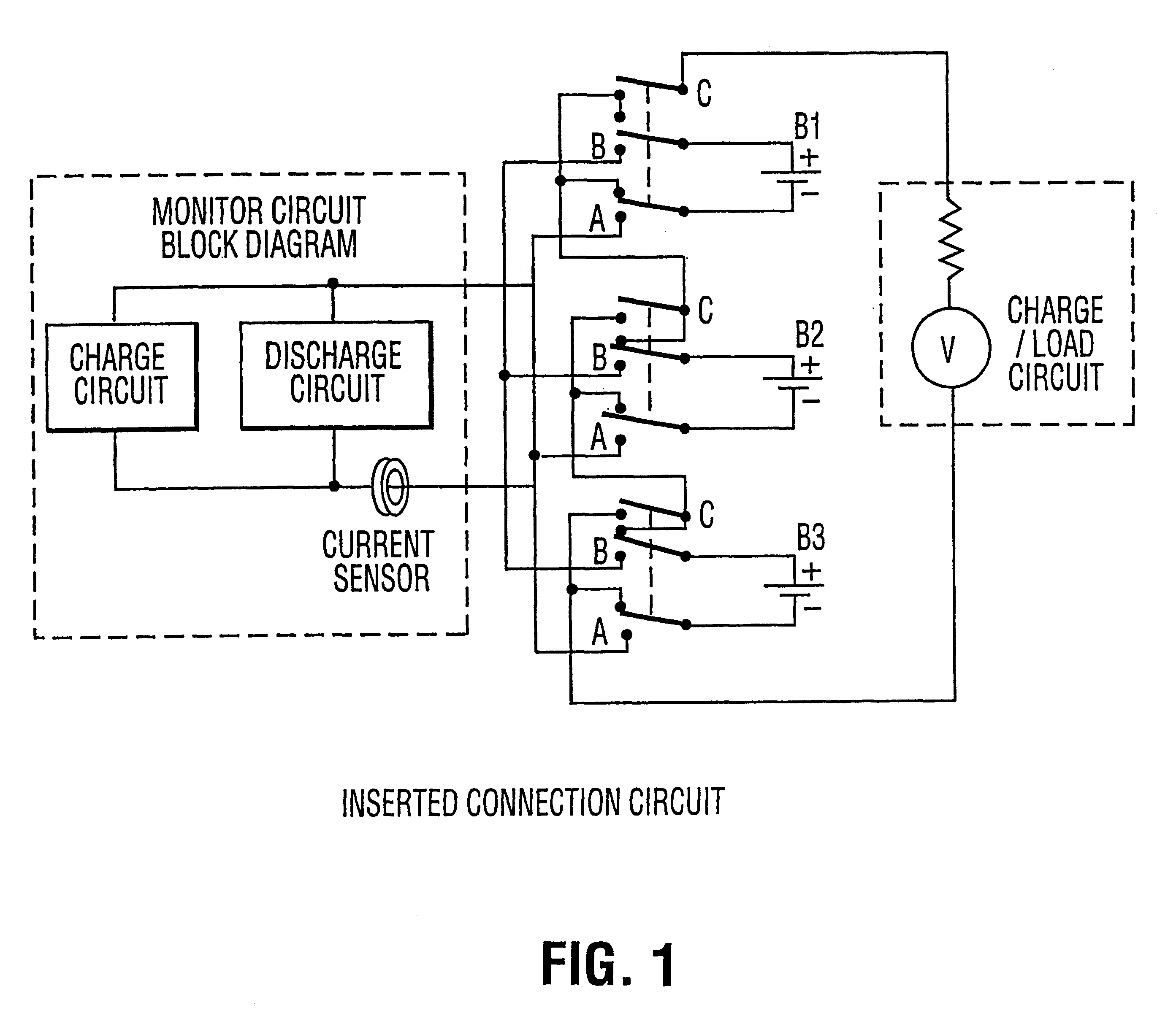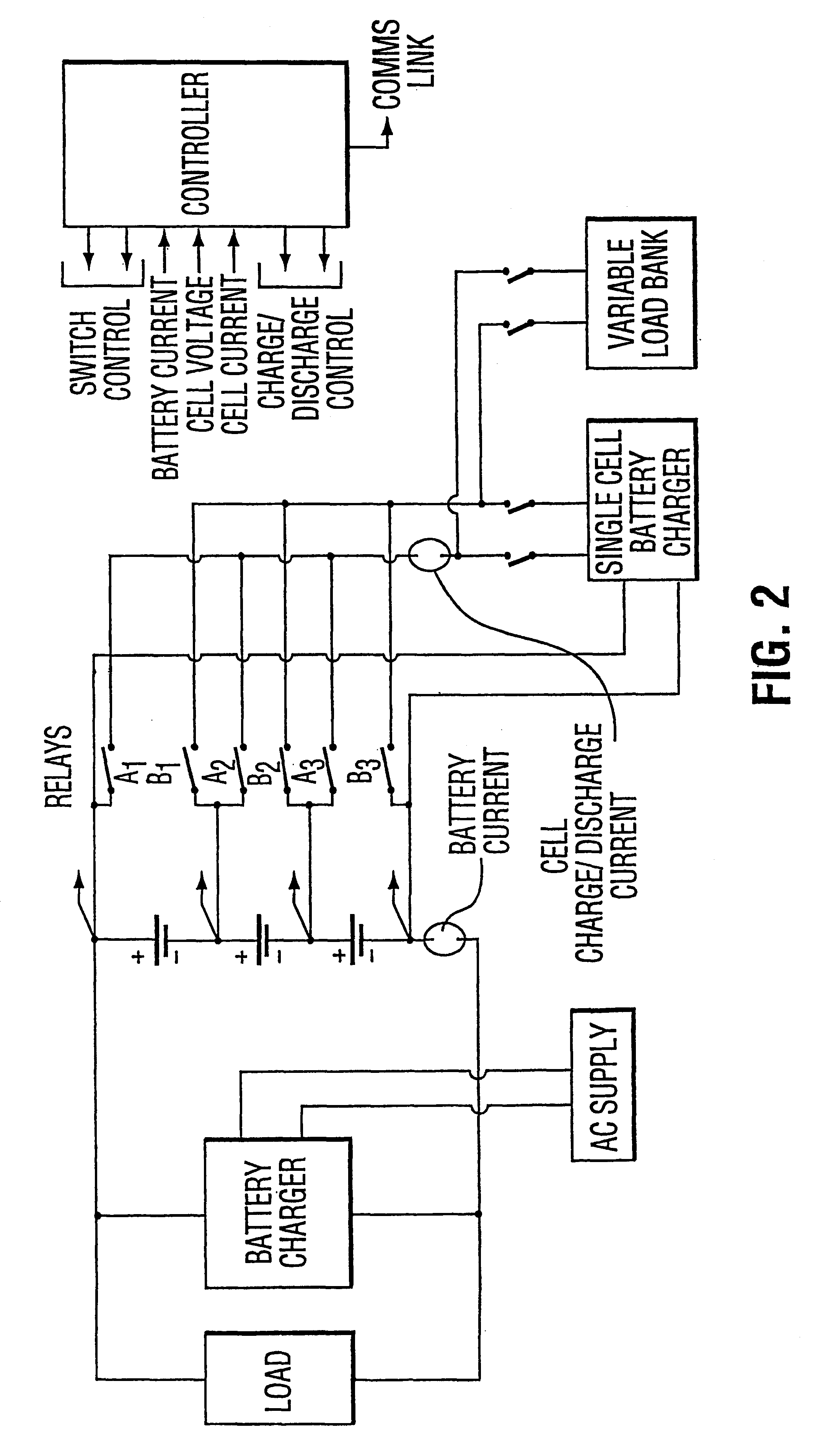Device for managing battery packs by selectively monitoring and assessing the operative capacity of the battery modules in the pack
a technology for managing battery packs and modules, applied in the direction of different battery charging, charging equalisation circuits, indicating/monitoring circuits, etc., can solve the problems of not providing the user with direct information regarding the length of time the battery will operate under load, no practical method to load test a back-up battery at a remote site, and no accurate means of determining the useful capacity of batteries. , to achieve the effect of enhancing the useful capacity, boosting the health of the battery modul
- Summary
- Abstract
- Description
- Claims
- Application Information
AI Technical Summary
Benefits of technology
Problems solved by technology
Method used
Image
Examples
Embodiment Construction
For application in a specific context, namely as a monitoring and management system to assess the operative capacity of railroad crossing back-up power systems, the invention may be housed in the same enclosure as the battery pack and the Crossing Analyzer (CA). As well, in a preferred embodiment, the present invention may be set up to access a spare input on the CA to notify the railroad dispatch centre of battery problems.
Alternately, where the railroad crossing is not equipped with CA, the railway maintainers could use an annunciator module to inquire about the health or operative capacity of each module in the battery pack during routine maintenance checks.
PUM
| Property | Measurement | Unit |
|---|---|---|
| voltage | aaaaa | aaaaa |
| voltages | aaaaa | aaaaa |
| recharge voltage | aaaaa | aaaaa |
Abstract
Description
Claims
Application Information
 Login to View More
Login to View More - R&D
- Intellectual Property
- Life Sciences
- Materials
- Tech Scout
- Unparalleled Data Quality
- Higher Quality Content
- 60% Fewer Hallucinations
Browse by: Latest US Patents, China's latest patents, Technical Efficacy Thesaurus, Application Domain, Technology Topic, Popular Technical Reports.
© 2025 PatSnap. All rights reserved.Legal|Privacy policy|Modern Slavery Act Transparency Statement|Sitemap|About US| Contact US: help@patsnap.com



